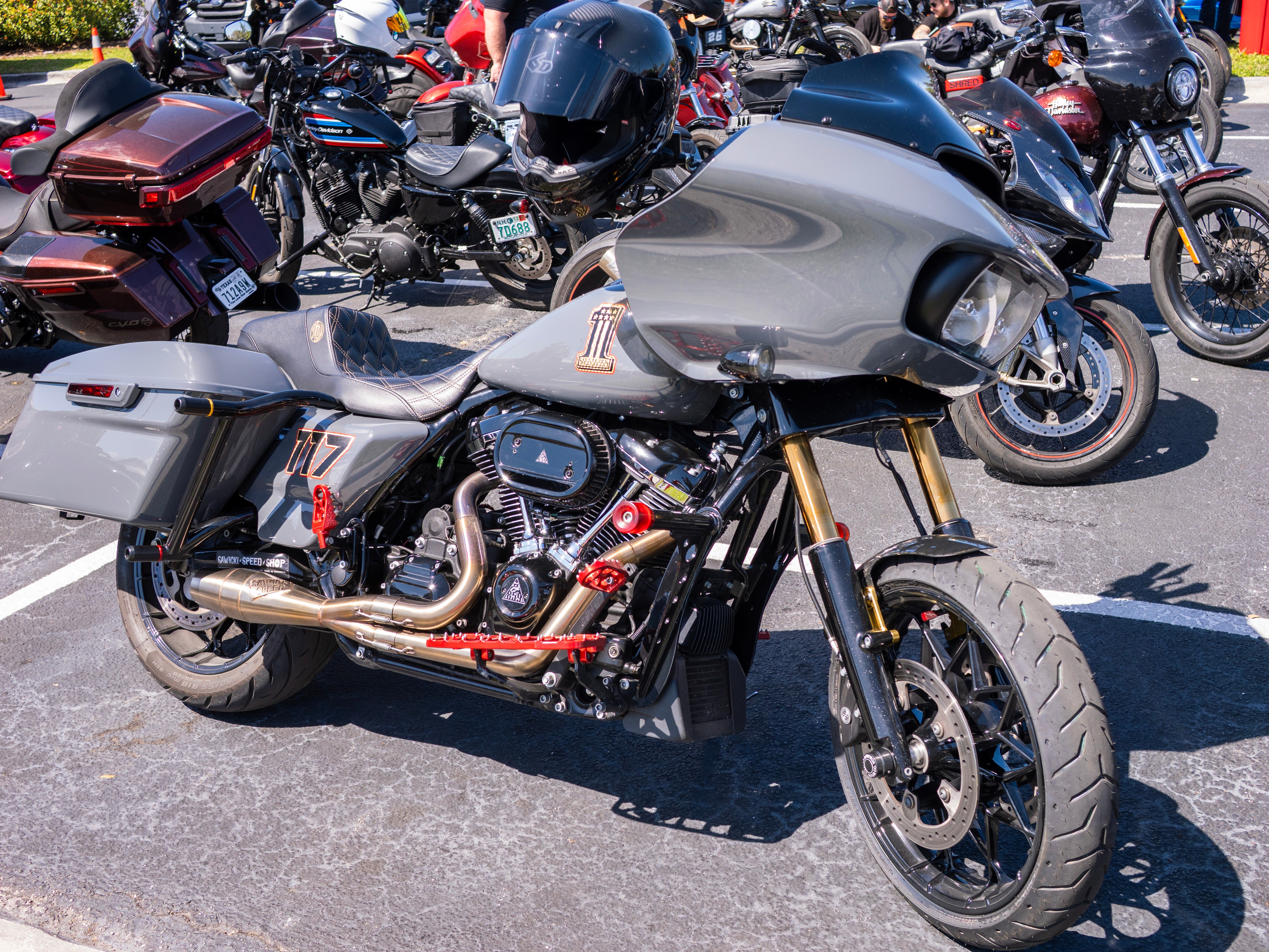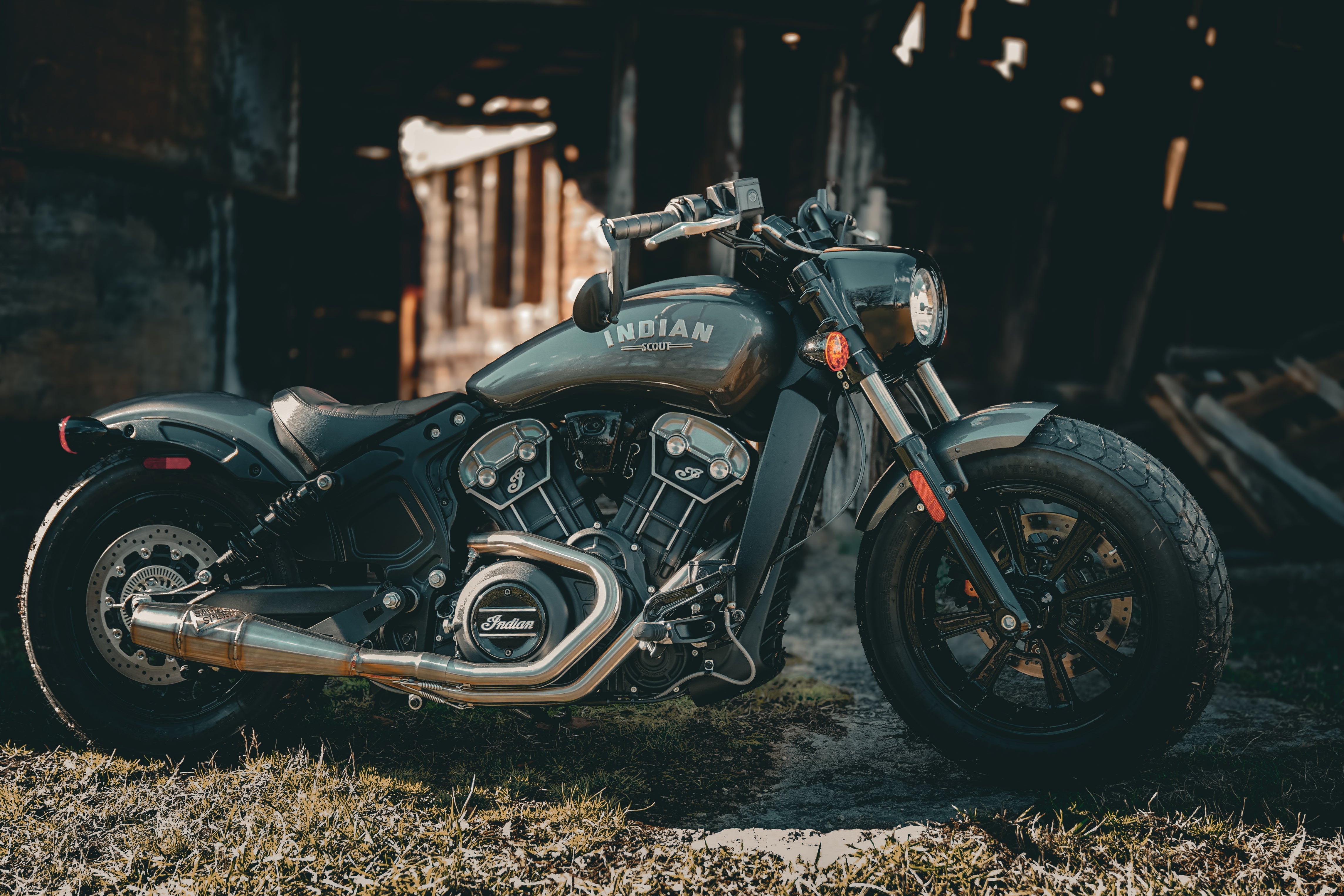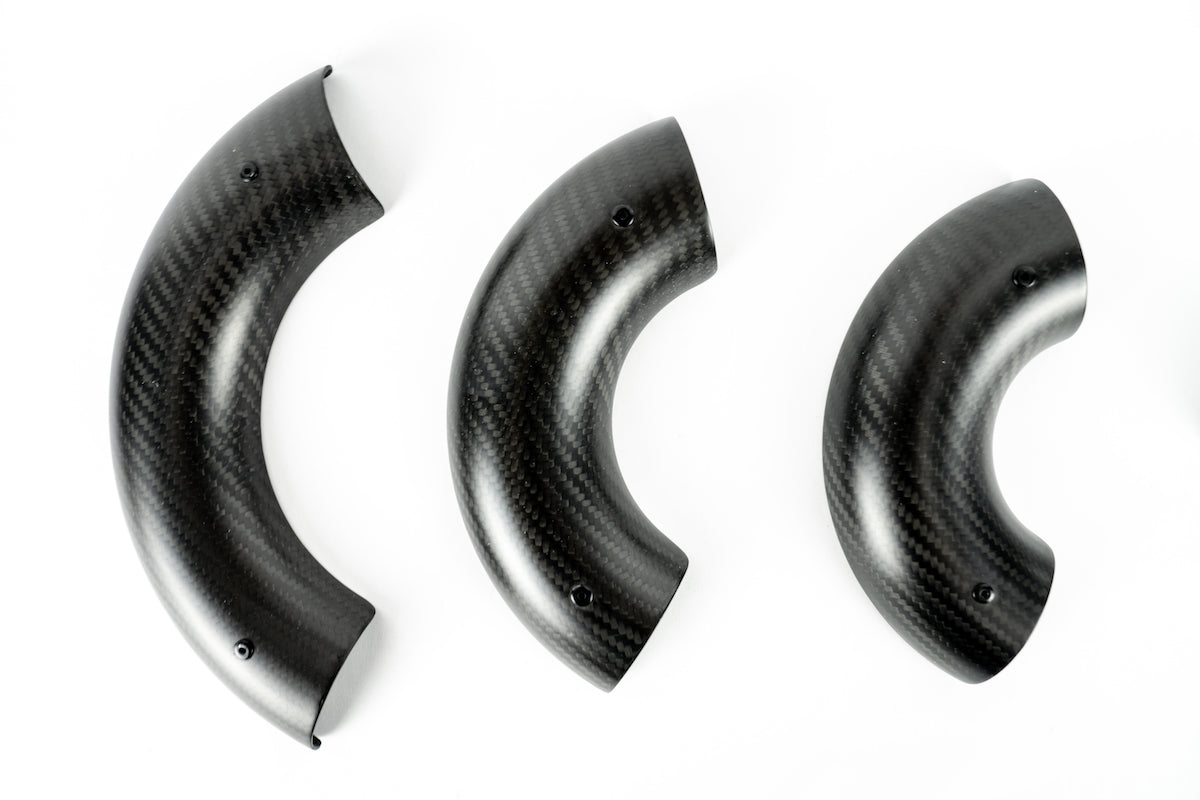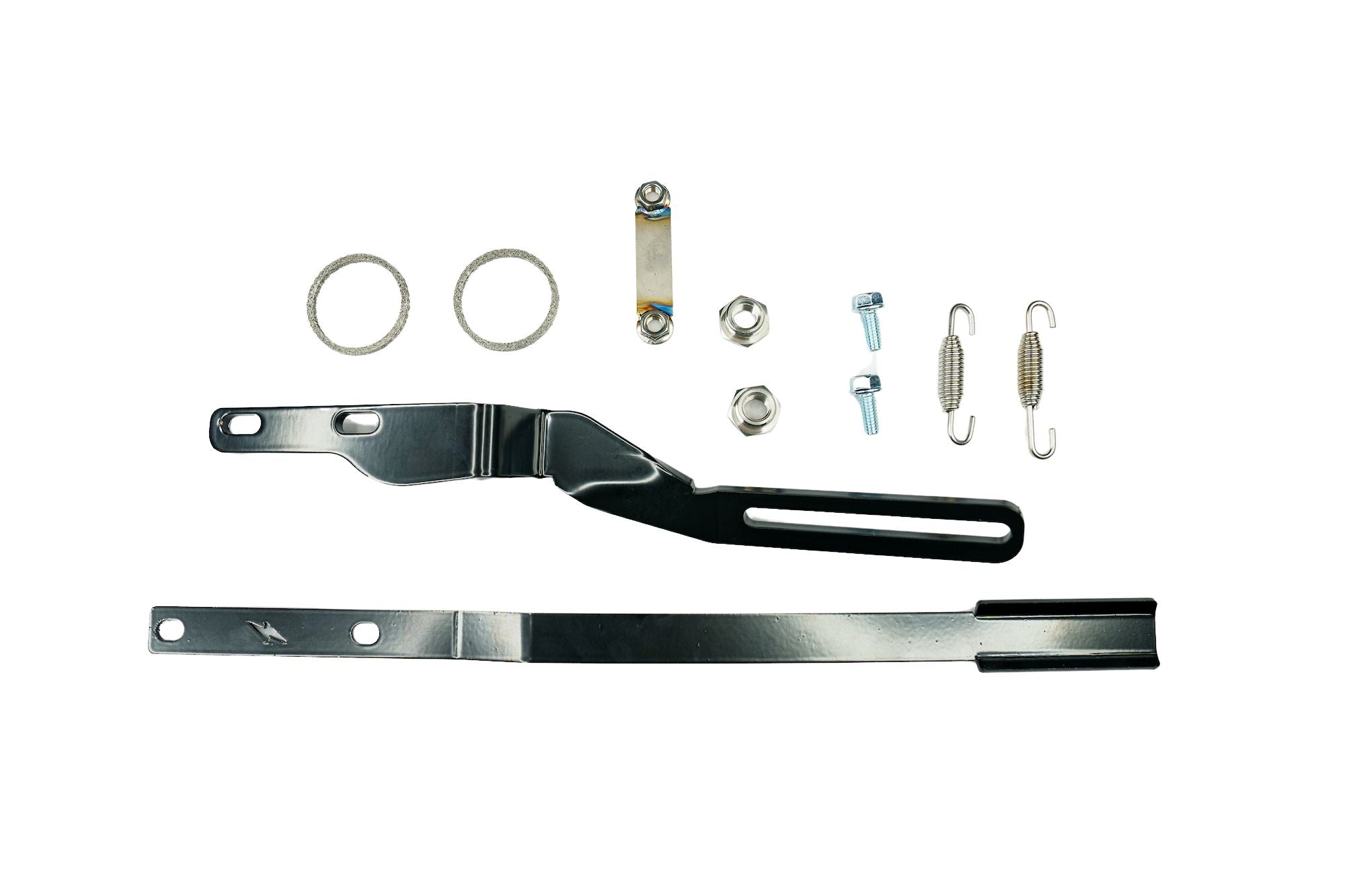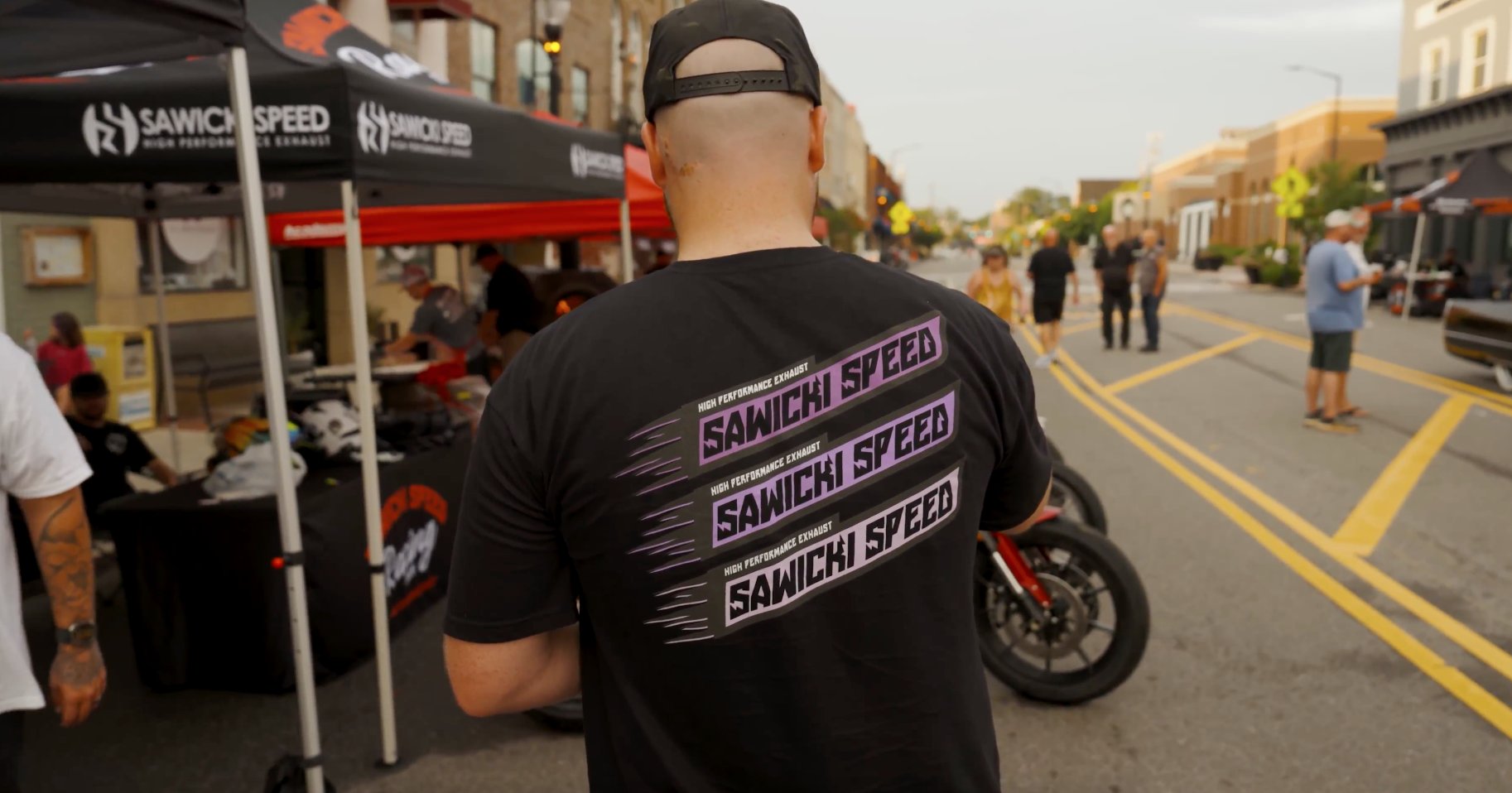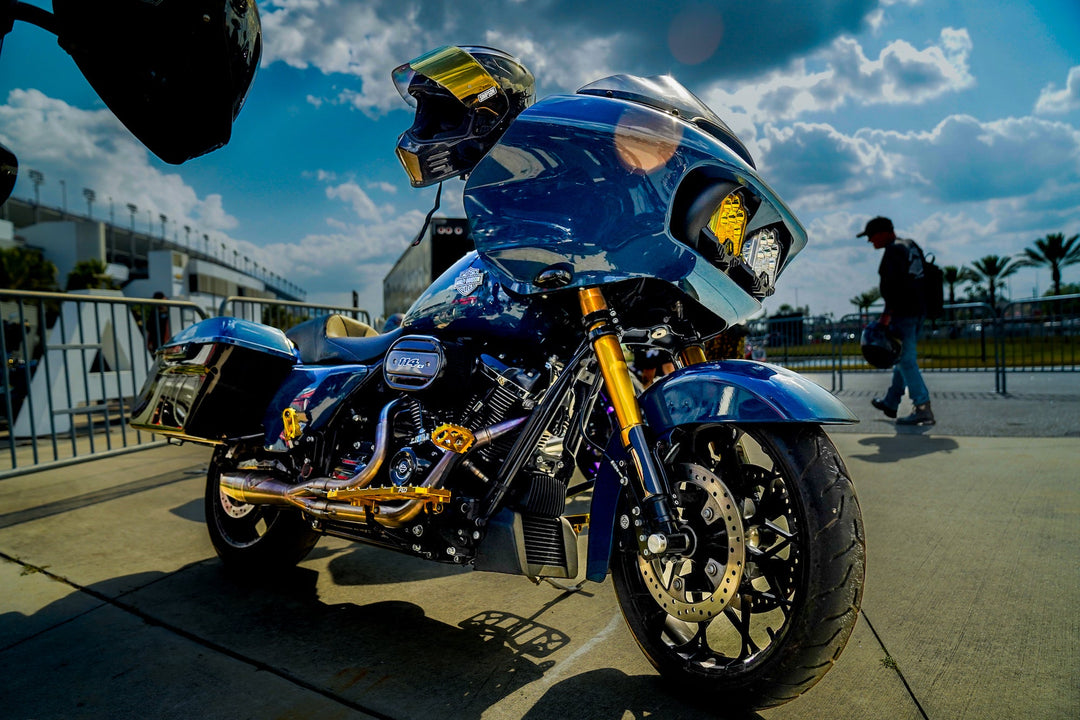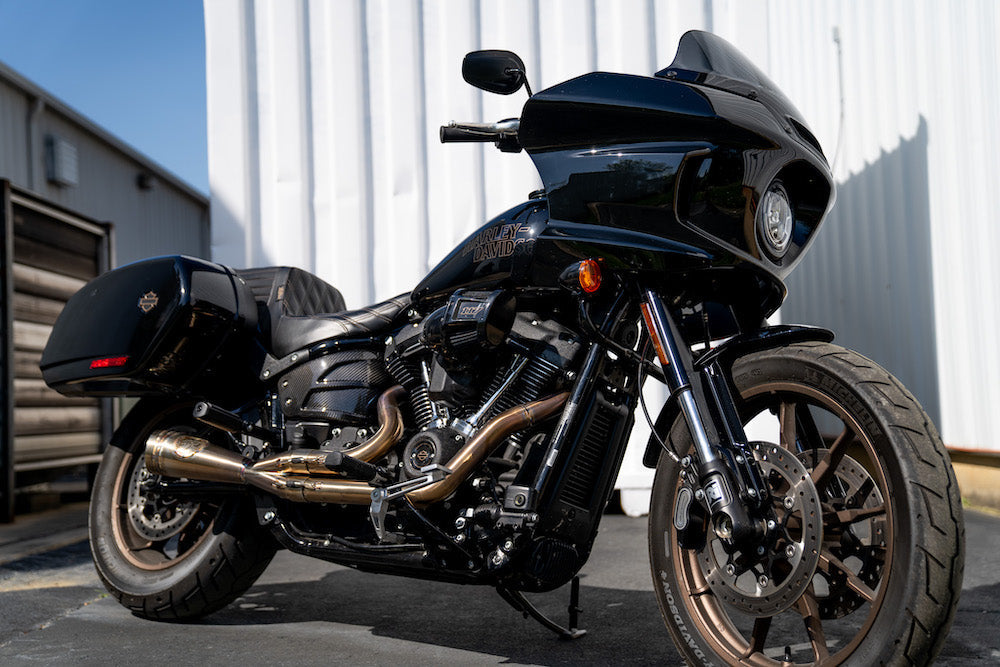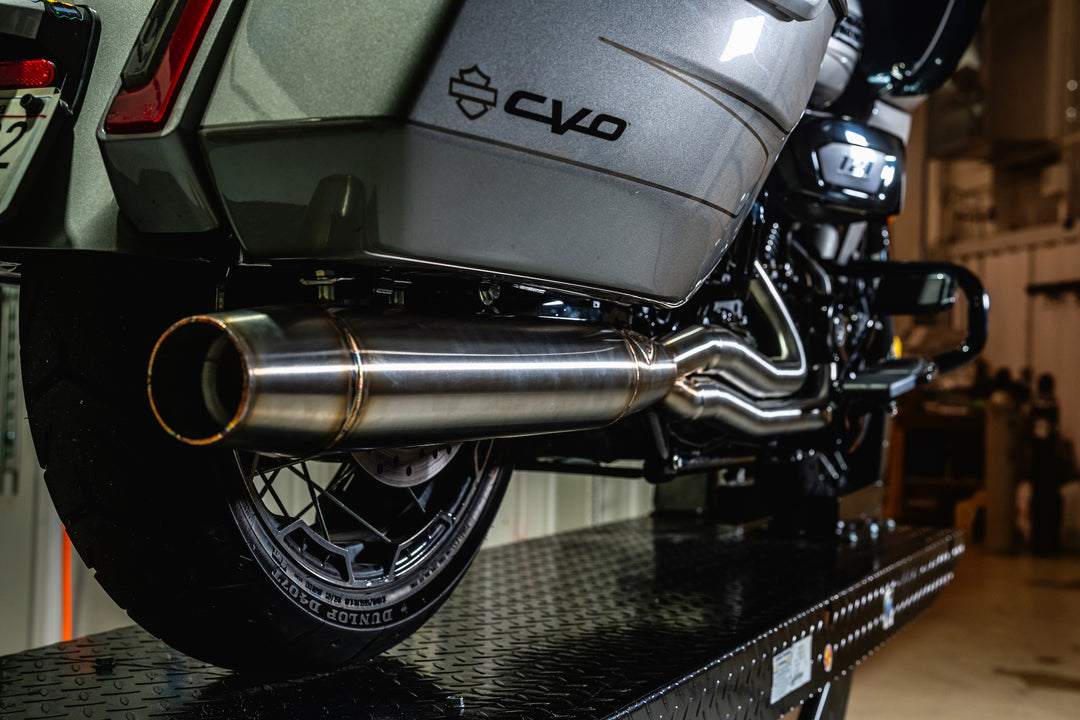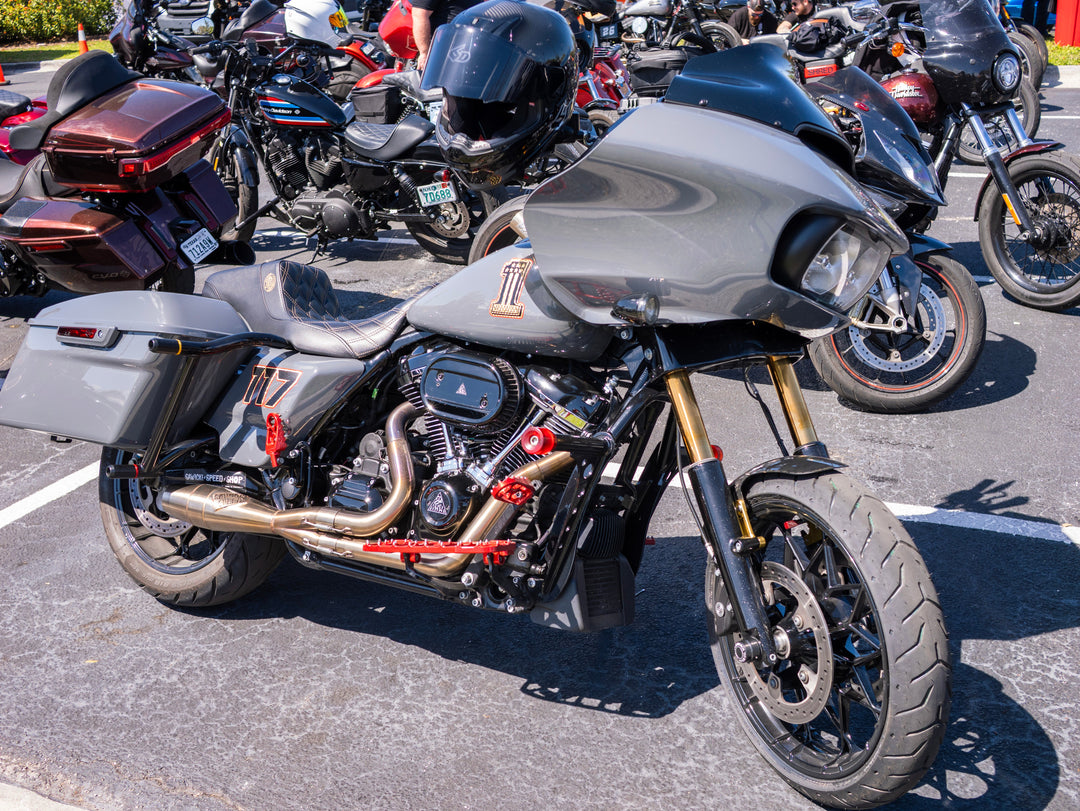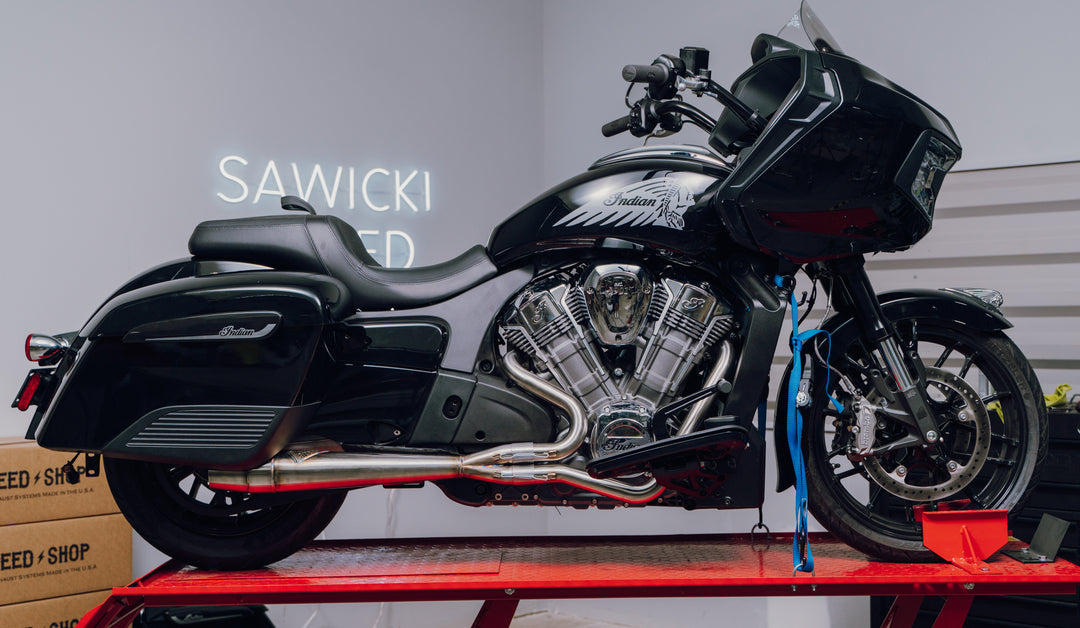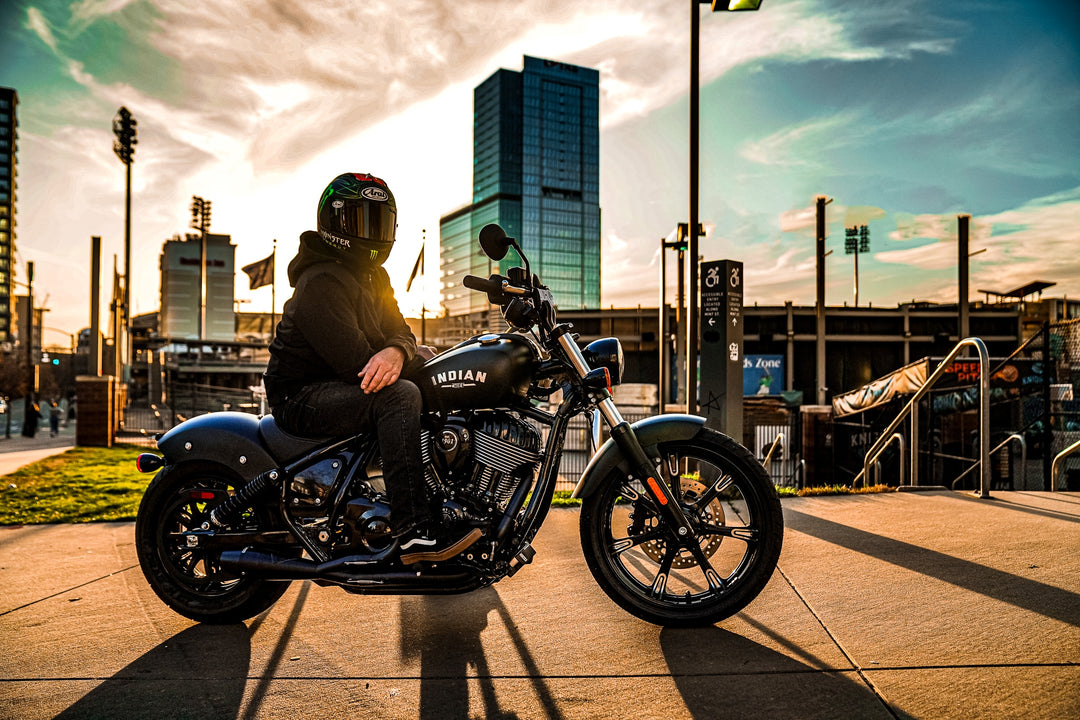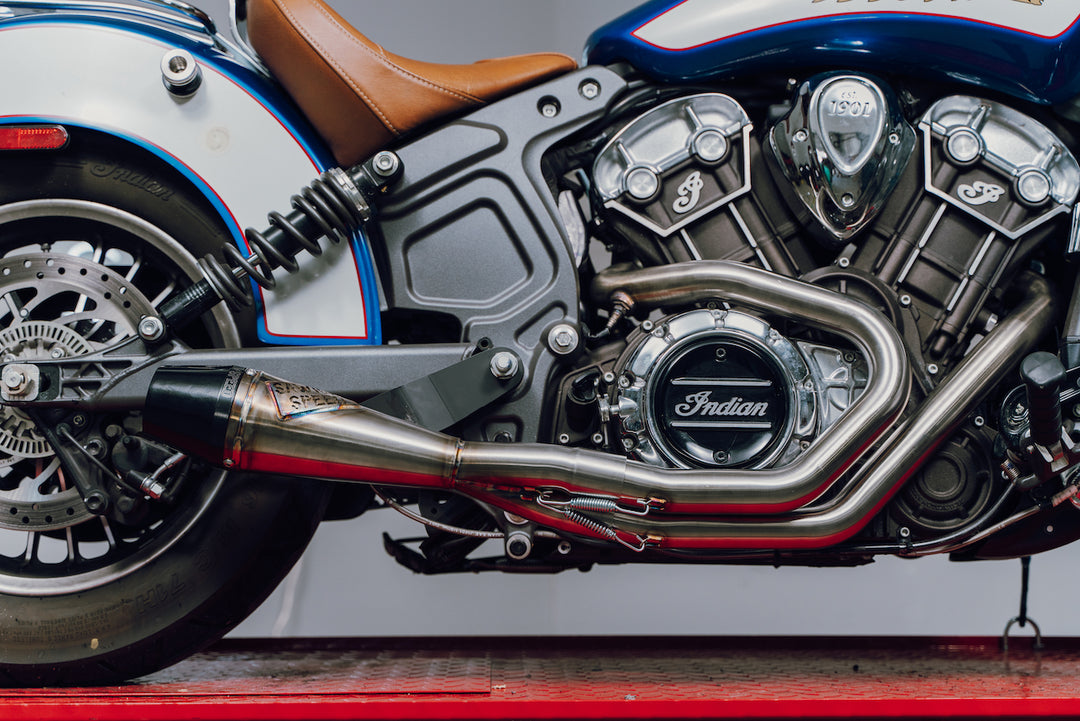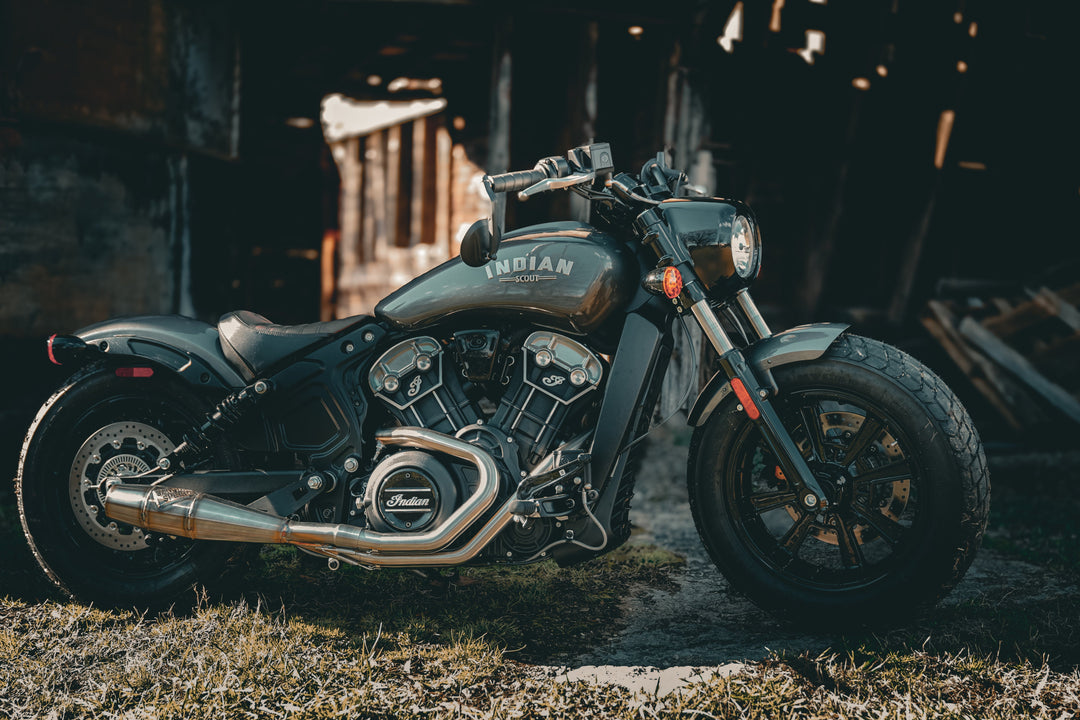How to clean and maintain your motorcycle exhaust
Harley-Davidson and Indian Motorcycle riders know that maintaining your bike isn’t just about keeping it looking good – it’s about ensuring peak performance. One essential aspect of upkeep is cleaning and maintaining your exhaust system. A well-maintained exhaust not only prolongs the life of your bike but keeps that signature roar as powerful as ever. This guide will walk you through the best ways to clean and maintain your motorcycle exhaust, ensuring your ride stays top-notch.
Why Cleaning and Maintaining Your Exhaust Matters
Your motorcycle’s exhaust system plays a critical role in its performance and sound. Over time, the exhaust can accumulate dirt, grime and oil, and its connections can become loose. This can negatively impact both aesthetics and functionality.
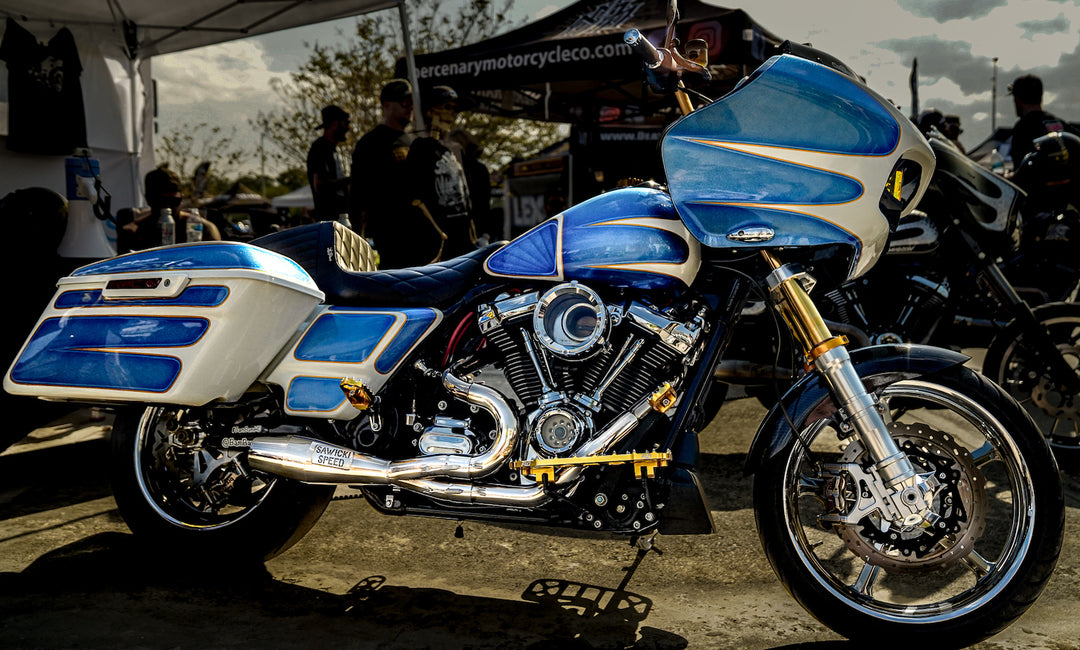
How to Clean Your Exhaust
First, gather your cleaning solutions and materials you will be using, and make sure your exhaust is cool to the touch. We recommend the following:
Brushed Stainless Steel finish
- General cleaning – clean cotton cloth and soapy water
- Heavy duty cleaning – Rapid evaporating solvents such as brake clean, acetone, methyl ethyl ketone (MEK) are great since they leave no residue. Anything that leaves a residue may discolor your pipe or cause oxidation when the pipe heats up, which may leave an undesired finish that can only be corrected by rebrushing or surface finishing. Red and gray scotch brite pads, steel wool and even SOS pads can help to remove anything that may have melted onto the pipe from unwanted contact. Window cleaner can be used in place of solvents.
Ceramic Coated finish
- General cleaning – clean cotton cloth and soapy water
- Heavy duty cleaning – Simple Green or similar general purpose cleaner and cotton cloth (avoid using acid-based cleaners on these!)
Mirror Polished finish
- General cleaning – clean cotton cloth and soapy water
- Heavy duty cleaning – cotton towel and a rapidly evaporating solvent to clean any dirt or debris. Then apply a product like White Diamond metal polish or Blue Magic metal polish cream. Be sure to follow the polishing instructions provided by the manufacturer of the polish. This will restore that high luster of your polished exhaust.
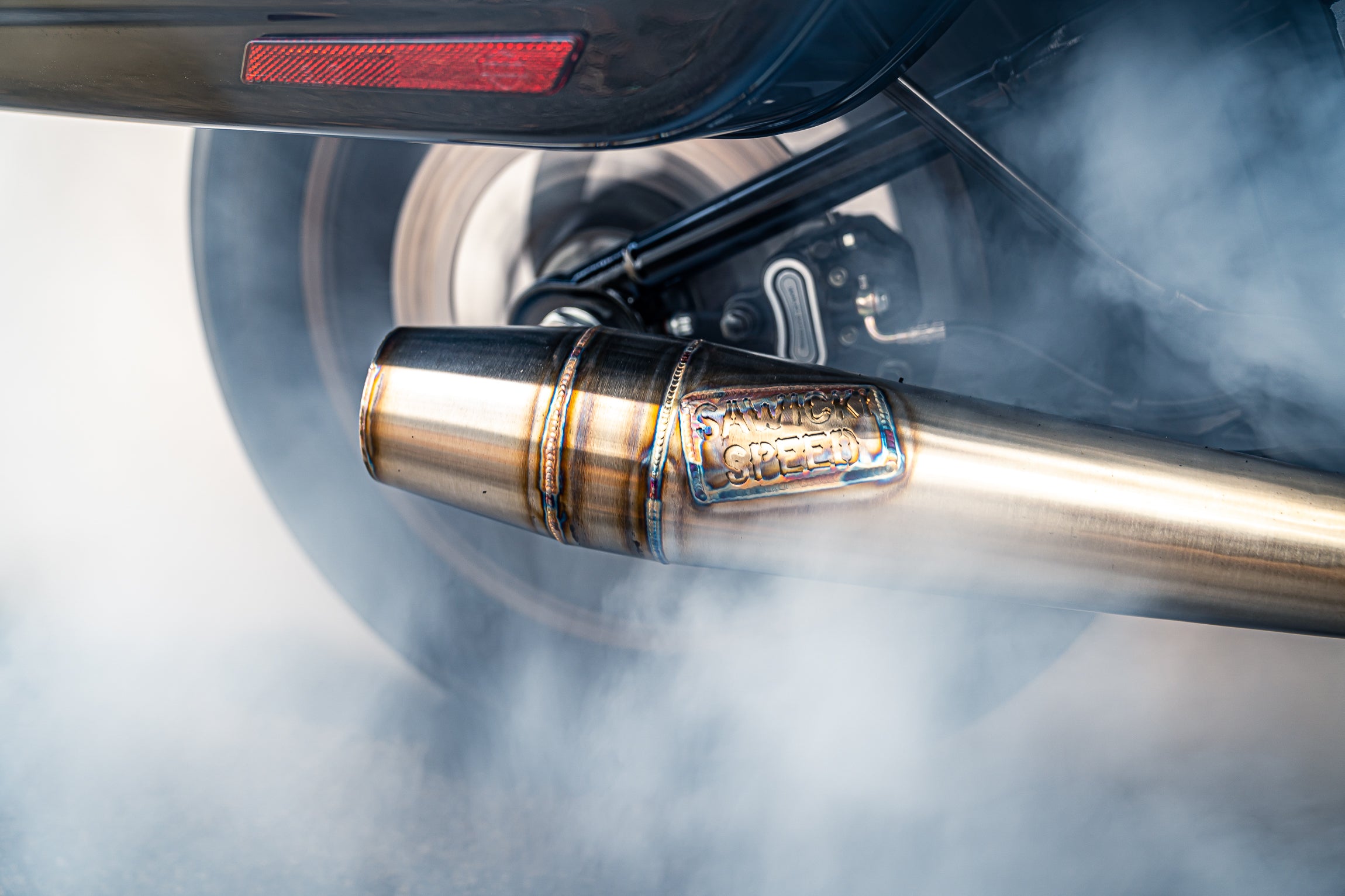
Pro Tips
- Never clean a hot exhaust system! Let it cool before cleaning.
- Always use clean cloths or towels!
- Wear gloves or avoid touching the pipe after it's been cleaned – human oils will leave marks!
Basic Cleaning with Soap and Water
If you don’t have any burn marks or any material stuck to your exhaust surface, then you can proceed by cleaning with soap and water:
- Let your bike cool down before you start. Don’t clean a hot exhaust.
- Use a hose to rinse off loose dirt and debris.
- Use some soapy water (we prefer dish soap) and a cotton cloth to wash away any grime, dirt or oil.
- Rinse thoroughly with clean water.
- Use a clean and dry cotton cloth to dry the exhaust completely.
Heavy Duty Cleaning
Left some boot rubber on your exhaust or just have some heavy build up? Here’s what to do:
- Let your bike cool down before you start. Don’t clean a hot exhaust.
- Use a hose to rinse off loose dirt and debris.
- For stainless exhausts, you can use a razor blade or stainless wire brush to carefully scrape off any excess or built up material.
- Spray or pour your cleaning solution of choice onto your clean cotton cloth, and apply to areas that need attention or the entire exhaust exterior. For brushed stainless finishes that need extra attention, use a scotch brite pad and work it perpendicular to the pipe to match the brushed grain.
- Scrub gently to remove any built up grime.
- Rinse thoroughly with clean water.
- Use a clean and dry cotton cloth to dry the exhaust completely.
What to Avoid Using or Doing
- Don’t clean a hot exhaust!
- Avoid using microfiber cloths! Most are made from polyester and any particles left behind will melt when your pipe heats up. Cotton cloths are best for cleaning and wipe downs.
- Avoid using Purple Power or any acid-based cleaners or harsh solvents on coated pipes.
- Certain acid-based cleaners can discolor a brushed system. A spot test is always advised with any cleaner. Solvents will not affect brushed 304 stainless.
- Avoid using a grinder, heavy sand paper or files – these can leave heavy gouges in your pipe.
- It is very important not to leave oily residues on any pipe.
A Note About Finishes
Our brushed stainless steel finish exhausts are very easy to restore to that factory finish! If your stainless exhaust is showing any light scratches, use a red scotch brite pad and rub in a motion perpendicular to the pipe, being sure to match the grain mattern. Then use a little WD40 and a gray scotch brite pad to blend the finish.
We also get asked a lot about Blueing, which is discoloration in your head pipes. This typically affects brushed stainless finished exhausts and varies bike to bike, but usually heavy blueing is a sign that your fuel mixture is too rich. Blueing and gold coloration are normal.
How to Maintain Your Exhaust
Regular inspections are key to maintaining your exhaust system. Aim to inspect your exhaust at least once a month, possibly more frequently if you put on a lot of miles. And it’s always a good idea to inspect prior to departing on a big trip.
- Mounting points – ensure all mounting bracket bolts, muffler bolts, end cap bolts and flange bolts are secure and free of damage. It is very important not to over-torque your head studs! They will eventually break or cause a leak at the gasket.
- Leaks – check for any signs of exhaust leaks, such as soot marks or unusual noises.
- Heat shields – if you run Sawicki Speed heat shields, check the connection points on these as well.
Make Adjustments
If you notice minor issues, such as loose bolts or connections, go ahead and tighten them. Refer to your exhaust’s installation instructions if you run an aftermarket exhaust, or your motorcycle owner’s manual if you run a stock exhaust.
When to Go to a Professional
If you encounter any leaks or structural problems with your exhaust, mounting hardware or connection points, you can contact us at support@sawickispeed.com or contact your local motorcycle dealership or shop. We also recommend staying on top of your motorcycle manufacturer’s recommended service intervals.
Wrapping Up
Cleaning and maintaining your motorcycle exhaust is an essential part of keeping your Harley-Davidson or Indian Motorcycle running smoothly and looking great. By keeping your exhaust clean and performing regular inspections and maintenance, you can extend the life of your exhaust system and focus on your riding experience.
